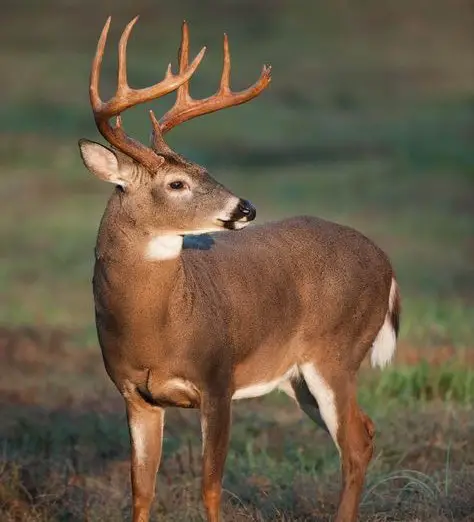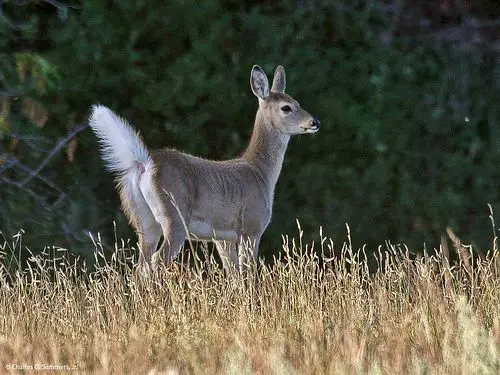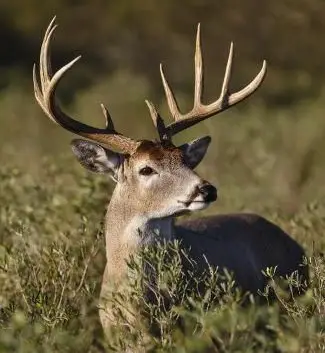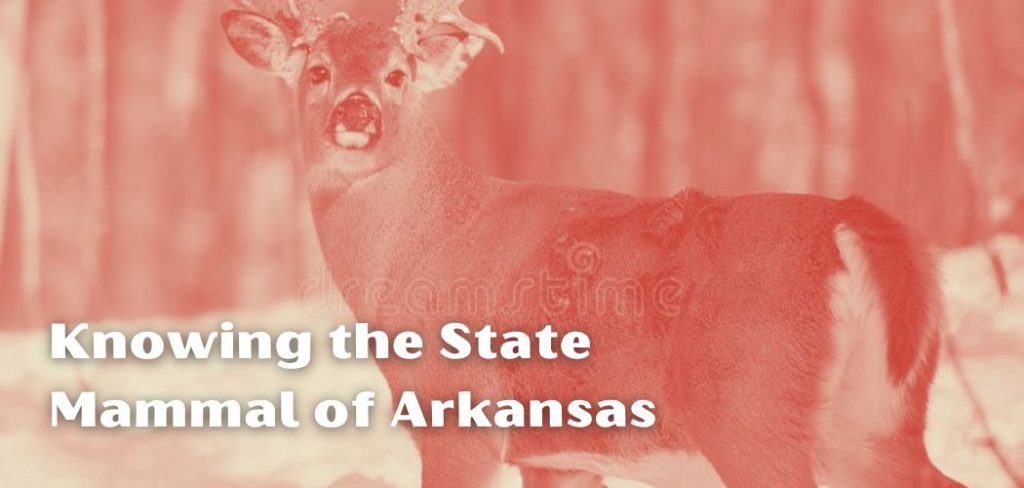Even though America is not much known for its diversity in cultures, each state has a distinct and fascinating culture comprising rich history and natural beauty.
To represent and preserve this diversity of people and customs, these states have selected various symbols and customs.
These vary from having specific flags, mottos, fruits, animals, birds, songs, and much more for showcasing each state’s uniqueness.
Similarly, Arkansas has various symbols to represent its culture and customs.
For their state mammal, they officially designated the white-tailed deer as the state mammal in 1993.
The white-tailed deer is an animal of extraordinary beauty and power.

It can jump 9-foot fences, sprint up to 40 miles per hour, and even swim at a speed of 13 miles per hour.
When sprinting, the white bottom side of the deer’s tail ripples and flashes as a warning when danger is detected.
Fawns are born with white patches to help them blend in.
Native Americans and early settlers both relied on white-tailed deer for living and sustenance along with utilizing its skin.
What is our state mammal?
Since 1993, Arkansas’s state mammal has been the majestic and gorgeous white-tailed deer.
Arkansas, like many other states, considers the white-tailed deer to be regarded as the state mammal instead of them being regarded as the state animal.
These magnificent creatures are mighty and agile, capable of running at speeds of up to 40 mph, leaping over 9 feet up in the air, and swimming at speeds of up to 13 mph!
When threatened, their snow-white tails serve as both a warning sign for others and a diversion and confusion for predators while keeping them safe.
The baby deer often referred to as the fawns are usually
The fawns (baby deers) are typically born with many white patches covering their bodies for concealment.

The native Americans along with European settlers used to rely heavily on these deer for their living, selling or wearing animal skins, and used them also as a vital source of sustenance.
Facts About White-tailed Deer:
– Most white-tailed deer exist between 2 and 3 years, with maximum longevity, in the wild, of up to 20 years.
However, usually, most white-tailed deer cannot live over 10 years because of deforestation, predators, along with environmental difficulties.
– While young deer are often referred to as fawns, whereas adults are referred to as bucks.
– They are excellent swimmers, which they exploit to avoid predators by swimming fast through various rivers and streams.
– The most popular large game mammal in the US is the white-tailed deer.
- Baby white-tail deer (Fawns) consume only their mother’s milk for two weeks after birth, and because they are herbivores, they will eat mostly leaves, twigs, and other greens after weaning.
Most states’ emblems depict a meaningful tale that represents the state and its history, geological makeup, and fauna.
The Natural State’s state animal conveys its past and what it stands for effectively.
This intriguing Arkansas fact, along with a slew of others, is what makes the state so distinct and fascinating to people who live there or are investigating the state’s historical events.
Why is the white-tailed deer the state mammal?
In March 1993, Arkansas’s 79th General Assembly passed House Bill 2110.
This bill offered recognition to the white-tailed deer as the state’s official mammal.
Later on April 5, 1993, Governor Jim Guy Tucker signed Act 892, which was a measure proposed by Representative Arthur F. Carter.
Odocoileus Virginianus is the officially selected emblem of eleven states, including Arkansas.
White-tailed deer were abundant in Arkansas before European settlement; the Hernando de Soto expedition observed Native American communities clad in deerskins.

The later Caddo people relied primarily on deer for food along with utilizing its skin or for trade purposes.
For decades, early Euro-American people hunted white-tailed deer without limitation and laws.
Roads, buildings, farms, and cities quickly encroached on its environment, causing deer populations to plummet.
The AGFC (Arkansas Game and Fish Commission) established the state’s first deer season in 1916 and deer refuges in the 1920s.
However, by the mid-1930s, just a few hundred deer remained in Arkansas, while the rate of decline started constantly.
The AGFC began gaining deer from adjacent states and, subsequently, transferring herds to spread territory and boost reproductive viability.
Arkansas’s white-tailed deer herd was estimated to be over 1 million in 2008 (The country’s population is believed to be around 15 million people).
Every year, up to 350,000 shooters attempt their luck with Arkansas’s white-tailed deer; the annual harvest surpasses 100,000.
In 1999, the AGFC discovered that roughly 6,000 employments directly depended on the hunting industry; hunters spent around $339 million per year, a large portion of which was attributed to white-tailed deer hunters.
This was followed by their recognition as the state mammals.
